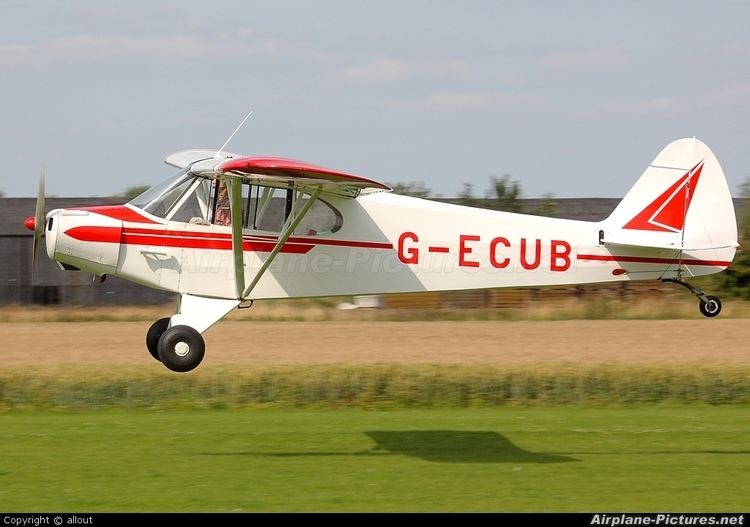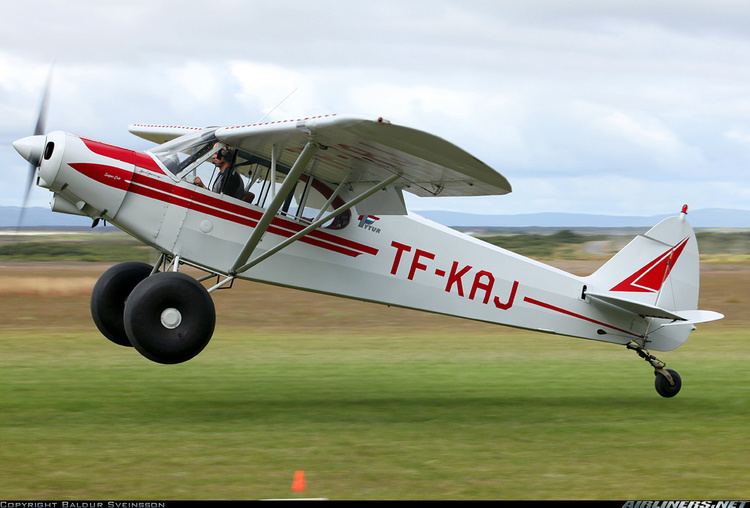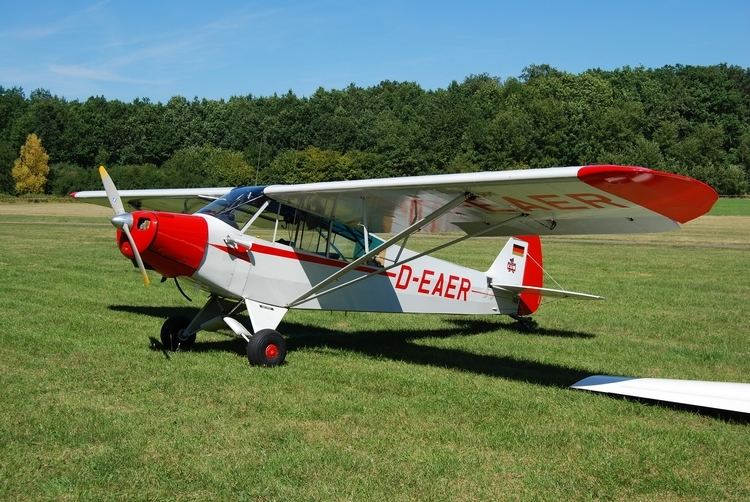Wingspan 11 m Top speed 209 km/h Cruise speed 180 km/h | Range 580 km Weight 367 kg Length 6.83 m | |
 | ||
Similar Piper J-3 Cub, Cessna 206, Cessna 172 | ||
Hangar 9 super cub 1 4 scale pa 18 rc plane super cub arf with a vvrc 40 twin engine
The Piper PA-18 Super Cub is a two-seat, single-engine monoplane. Introduced in 1949 by Piper Aircraft, it was developed from the Piper PA-11, and traces its lineage back through the J-3 to the Taylor E-2 Cub of the 1930s. In close to 40 years of production, over 9,000 were built. Super Cubs are commonly found in roles such as bush flying, banner and glider towing.
Contents
- Hangar 9 super cub 1 4 scale pa 18 rc plane super cub arf with a vvrc 40 twin engine
- Excellent short landing with side slip piper pa 18 super cub aircraft
- Design and development
- Variants
- Military designations
- Military operators
- Civilian Users
- Specifications PA 18 150 landplane
- References

Excellent short landing with side slip piper pa 18 super cub aircraft
Design and development

While based on the design of the earlier Cubs, the addition of an electrical system, flaps (3 notches), and a considerably more powerful engine (150 hp), make it a very different flying experience. Although the "standard" Super Cub was fitted with a 150-horsepower (112 kW) Lycoming engine, it is not uncommon to see them equipped with a 160-horsepower O-320-B2B, or even 180 horsepower (134 kW) Lycoming O-360 powerplant. The high-lift wing and powerful engine made the Super Cub a prime candidate for conversion to either floatplane or skiplane. In addition, the PA-18A (an agricultural version) was produced for applying either dry chemical or liquid spray.

The Super Cub retained the basic "rag and tube" (fabric stretched over a steel tube frame) structure of the earlier J-3 Cub.

The first true "Super" Cubs had flaps, dual fuel tanks, and an O-235 Lycoming engine producing about 108 hp (115 hp for takeoff only). However, a 90 hp Continental variant without flaps and an optional second wing tank was available. Their empty weight was, on the average, 800–1000 pounds with a gross weight of 1,500 lb. These Cubs would take off in about 400 feet (at gross weight) and land in about 300 feet (thanks to the flaps). The Super Cub is renowned for its ability to take off and land in very short distances. The first Super Cubs were going to be offered with a unique four-wheel tandem main landing gear designed for landing and takeoff from rough terrain, but this was replaced with conventional landing gear. The O-290 Lycoming powered Cubs (135 hp) followed and would take off in about 200 feet (61 m). The landing distance remained the same at about 400 feet (120 m), or 300 feet (91 m) using flaps. With the use of the Lycoming O-320 at 150–160 hp, the Cub's allowable gross weight increased to 1,750 lb while retaining the capability of a mere 200 feet (61 m) required for takeoff.

The PA-18 has developed a very dedicated following in the bush-flying community, and many modifications have been developed for it, to the point where it is quite rare to find an original, completely stock Super Cub. Modifications include extended baggage compartments (reaching farther back into the fuselage, or even two-level baggage compartments in the top and bottom of the rear fuselage), external luggage pods, fuel pods, lumber racks for carrying construction materials into unimproved bush runways. Also the removal of header tanks, larger 24 or even 30 gallon wing fuel tanks, extended main landing gear for better ground clearance of the propeller, strengthened tailwheel springs, the addition of a small third passenger seat in the luggage area and lightweight generators and starters. Also various different mount areas for the battery (to move the weight forward, and reduce tail weight to shorten takeoff distance), various different tailfin shapes to increase surface area, lengthened flaps, various wingtip designs, vortex generators on the leading edge of the wings, movement of the electrical panel from the right wing root to the dashboard to reduce fire hazard during a crash, and even the addition of a constant-speed propeller. Above all, the most common modification is the addition of "bush wheels", large, soft, low pressure balloon-tires designed to absorb impacts from rocks and boulders, and to not sink into sand or other soft surfaces, ideal for off-runway landings.
Variants

Military designations
Military operators
Civilian Users
Specifications (PA-18-150 landplane)
Data from Jane's All The World's Aircraft 1976-77
General characteristics
Performance
